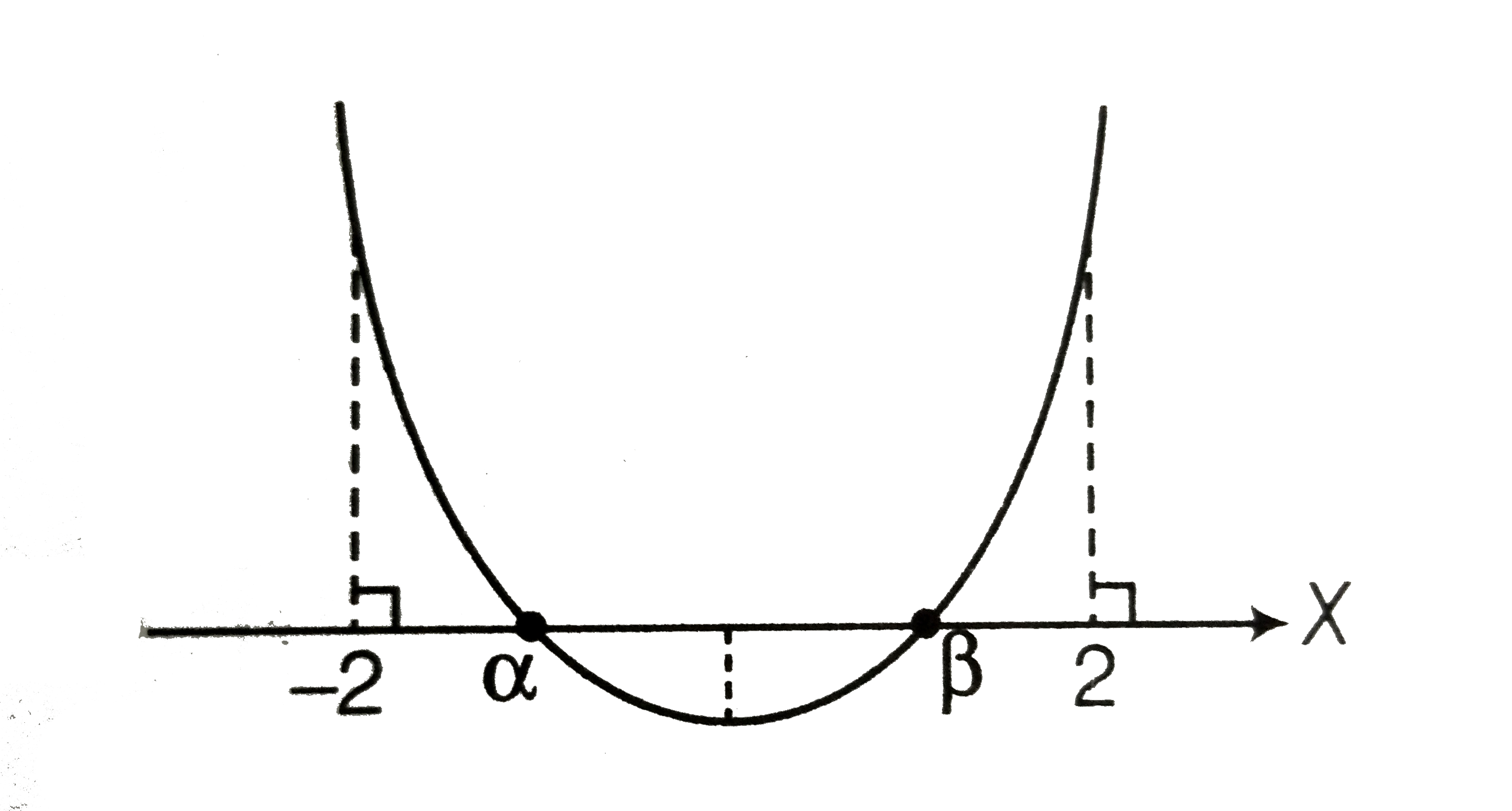If both roots of the equation x2−2ax+a2−1=0 lie between (−2,2) then a lies in the intervalSolution in Punjabi
R
(−1,1)
(−2,2)
(−3,−1)∪(1,3)
The correct Answer is:B
Let f(x)=x2−2ax+a2−1
Now four cases arise:
Case I D≥0

⇒(−2a)2−4.1(a2−1)≥0
⇒4≥0 ltbr>gt ∴aεR
Case II f(−2)>0
⇒4+4a+a2−1>0
⇒a2+4a+3>0
⇒(a+1)(a+3)>0
∴aε(−∞,−3)∪(−1,∞)
Case III f(2)>0
⇒4−4a+a2−1>0
⇒a2−4a+3>0
⇒(a−1)(a−3)>0
∴aε(−∞,1)∪(3,∞)
Case IV −2<x coordinate of vertex <2
⇒−2<2a<2
∴aε(−1,1)
Hence [a]=−1,0
Topper's Solved these Questions
- THEORY OF EQUATIONSBOOK - ARIHANT MATHSCHAPTER - THEORY OF EQUATIONSEXERCISE - SCQ_TYPE
1 Videos
- THEORY OF EQUATIONSBOOK - ARIHANT MATHSCHAPTER - THEORY OF EQUATIONSEXERCISE - Exercise (More Than One Correct Option Type Questions)
15 Videos
- THEORY OF EQUATIONSBOOK - ARIHANT MATHSCHAPTER - THEORY OF EQUATIONSEXERCISE - Exercise For Session 5
10 Videos
- THE STRAIGHT LINESBOOK - ARIHANT MATHSCHAPTER - THE STRAIGHT LINESEXERCISE - The Straight Lines Exercise 8 : (Questions Asked in Previous 13 years Exams)
1 Videos
- THREE DIMENSIONAL COORDINATE SYSTEMBOOK - ARIHANT MATHSCHAPTER - THREE DIMENSIONAL COORDINATE SYSTEMEXERCISE - Three Dimensional Coordinate System Exercise 12 : Question Asked in Previous Years Exam
2 Videos
Similar Questions
From the graph of a quadratic polynomial y=ax2+bx+c,a,b,εR , Find its vertex, roots and D.
View SolutionIf 0<a<b<c and the roots α,β of the equation ax2+bx+c=0 are non-real complex numbers, then
View SolutionThe equation √x+1−√x−1=√4x−1 has
View SolutionSolve the following system of inequalities graphically
x+5y≤25,2x+2y≥2,2x−2y≤0,x≥0,y≥0
View SolutionConsider the line L1:x−12=y−1=z+31,L2:x−41=y+31=z+32 find the angle between them.
View SolutionFind all the values of 'a' for which both the roots of the equation (a-2)x^(2)-2ax+a=0 lies in the interval (-2,1).
View SolutionIf both roots of the equation x2−2ax+a2−1=0 lie between -3 and 4 and [a] denotes the integral part of a, then [a] cannot be
View SolutionIf both the roots of the quadratic equation x2−mx+4=0 are real and distinct and they lie in the interval [1, 5], then m lies in the interval
View SolutionIf both the roots of the quadratic equation x2−mx+4=0 are real and distinct and they lie in the interval [1,5], then m lies in the interval
View SolutionIf both roots of the equation x2−2ax+a2−1=0 lie between -3 and 4 ,then [a] is/are , where [ ] represents the greatest ineger function
View SolutionIF both the roots of equation x2−2ax+a2−1=0 lie in the interval (−3,4) , then sum of the integral of a is
View SolutionIf both the roots of the equation x2−4ax+1−3a+4a2=0 exceed 1, then a lies in the interval
View Solutionif both the roots the equation x2−4ax+1−3a+4a2=0 exceed 1, then 'a' lies in the interval
View SolutionThe interval in which the real number a lies so that the roots of x2−2ax+a2=0 lies between - 2 and 4 is
View SolutionThe values of a for which both the roots of the equation (1−a2)x2+2ax−1=0 lie between 0 and 1 are given by
View SolutionThe value of a for which both the roots of the equation (1−a2)x2+2ax−1=0 lie between 0 and 1, will always be greater than
View Solution
